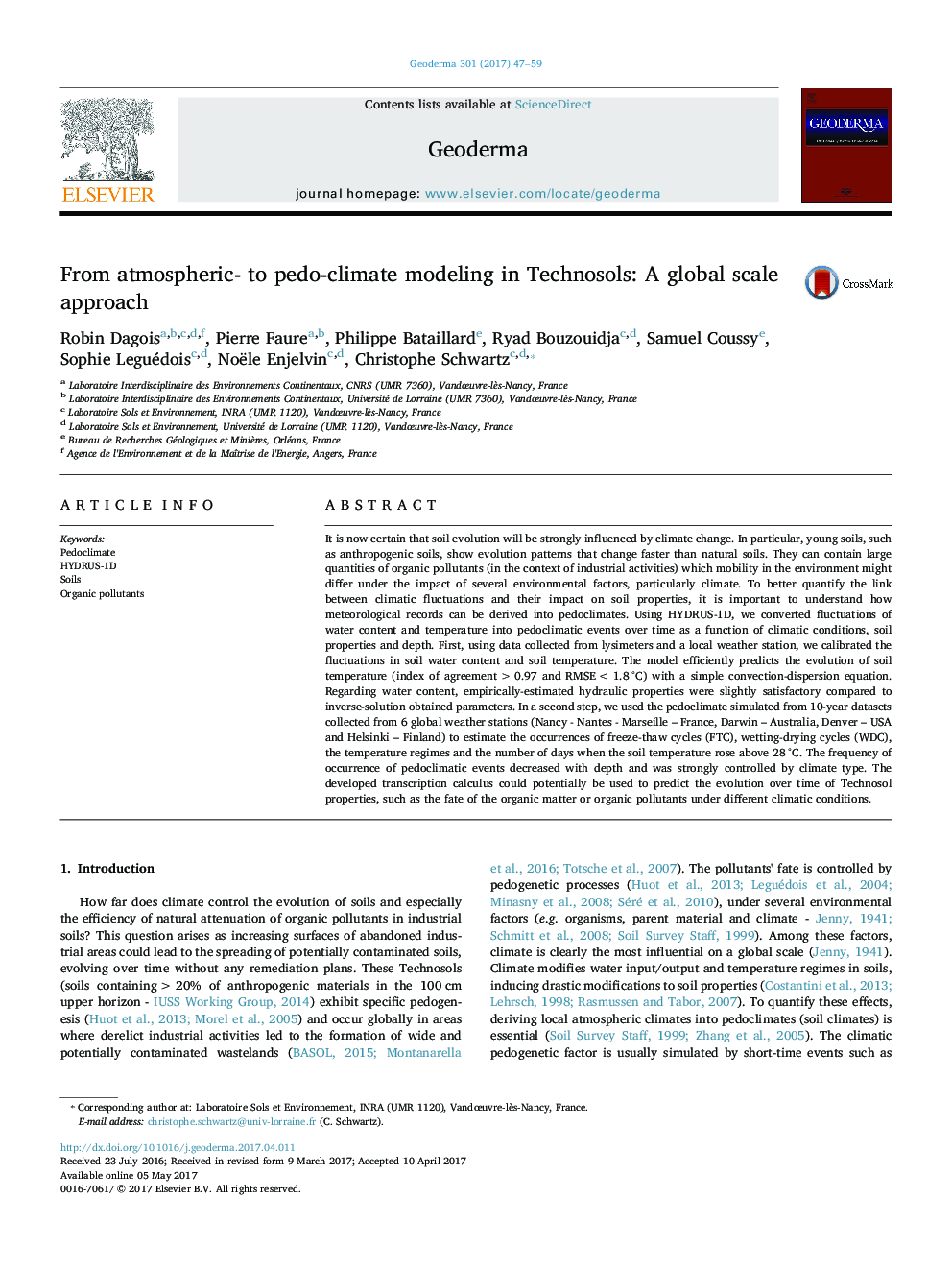| Article ID | Journal | Published Year | Pages | File Type |
|---|---|---|---|---|
| 5770320 | Geoderma | 2017 | 13 Pages |
â¢Development of an integrated method to derive atmospheric climates into pedoclimatesâ¢Validation and optimization of the pedoclimate by in situ lysimeter monitoringâ¢Calibration of pedoclimate events for six contrasting climates on a global scaleâ¢Procedure designed for a long-term management of polluted soilsâ¢Adaptability to various studies of soil characteristics evolution over time
It is now certain that soil evolution will be strongly influenced by climate change. In particular, young soils, such as anthropogenic soils, show evolution patterns that change faster than natural soils. They can contain large quantities of organic pollutants (in the context of industrial activities) which mobility in the environment might differ under the impact of several environmental factors, particularly climate. To better quantify the link between climatic fluctuations and their impact on soil properties, it is important to understand how meteorological records can be derived into pedoclimates. Using HYDRUS-1D, we converted fluctuations of water content and temperature into pedoclimatic events over time as a function of climatic conditions, soil properties and depth. First, using data collected from lysimeters and a local weather station, we calibrated the fluctuations in soil water content and soil temperature. The model efficiently predicts the evolution of soil temperature (index of agreement > 0.97 and RMSE < 1.8 °C) with a simple convection-dispersion equation. Regarding water content, empirically-estimated hydraulic properties were slightly satisfactory compared to inverse-solution obtained parameters. In a second step, we used the pedoclimate simulated from 10-year datasets collected from 6 global weather stations (Nancy - Nantes - Marseille - France, Darwin - Australia, Denver - USA and Helsinki - Finland) to estimate the occurrences of freeze-thaw cycles (FTC), wetting-drying cycles (WDC), the temperature regimes and the number of days when the soil temperature rose above 28 °C. The frequency of occurrence of pedoclimatic events decreased with depth and was strongly controlled by climate type. The developed transcription calculus could potentially be used to predict the evolution over time of Technosol properties, such as the fate of the organic matter or organic pollutants under different climatic conditions.
Graphical abstractDownload high-res image (242KB)Download full-size image
